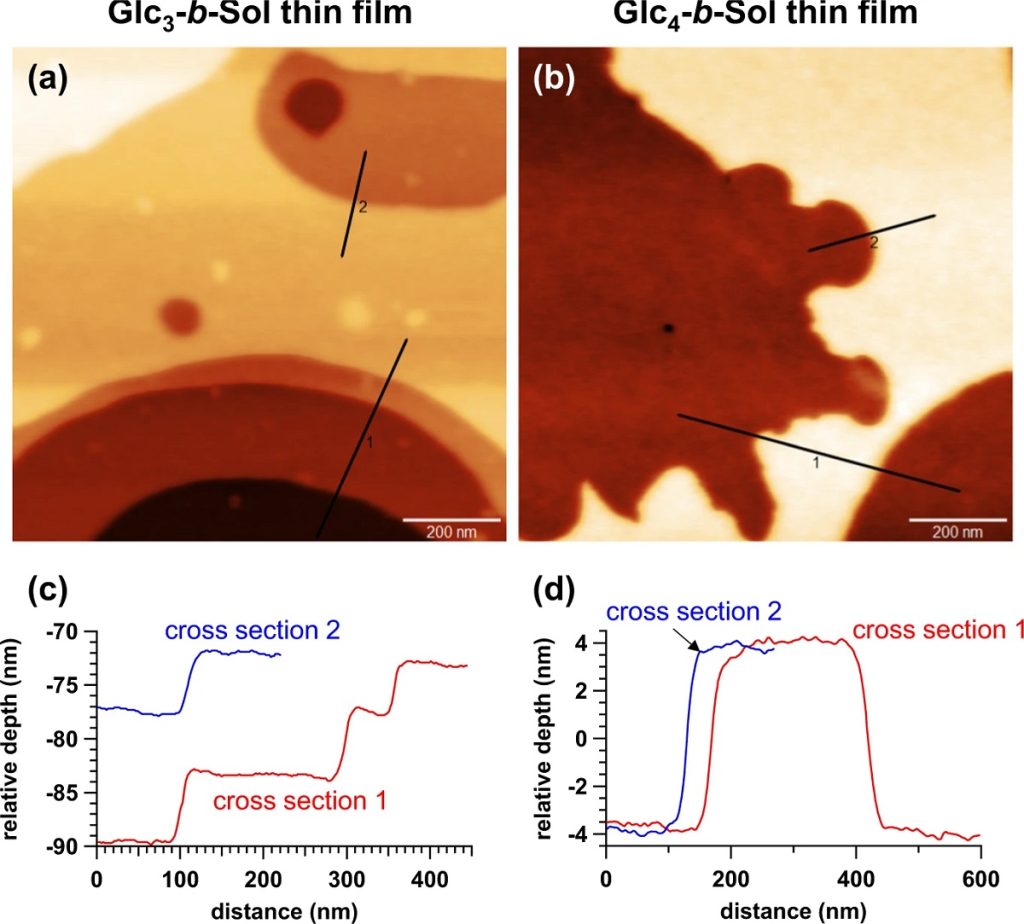Discrete block co-oligomers (BCOs) can form highly ordered ultrasmall nanostructures which can be used for lithographic templates. These nanotemplates are promising for the low-cost, large-scale, and high-throughput production of sub-10 nm nanomaterials and nanodevices. However, work-intensive synthetic routes can be an obstacle to their practical application. *
In “Rapid access to discrete and monodisperse block co-oligomers from sugar and terpenoid toward ultrasmall periodic nanostructures” Takuya Isono, Ryoya Komaki, Chaehun Lee, Nao Kawakami, Bian J. Ree, Kodai Watanabe, Kohei Yoshida, Hiroaki Mamiya, Takuya Yamamoto, Redouane Borsali, Kenji Tajima and Toshifumi Satoh report the development of a readily available monodisperse and discrete block co-oligomer (BCO) system consisting of hydrophilic sugars and hydrophobic terpenoids that is capable of forming various self-assembled nanostructures with ultrasmall periodicity.*
The authors believe that the BCOs presented in their publication have the potential to contribute to accelerating applied research of solid and solution state self-assembly of discrete and monodisperse BCOs, thereby expanding their application scopes in various fields of not only the nanolithography but also organic devices, separation materials, coatings, etc.*
NANOSENSORS™ PointProbe® Plus PPP-NCHR standard tapping mode AFM probes and SuperSharpSilicon™ SSS-NCHR high resolution (typical AFM tip radius 2nm) silicon AFM probes for tapping mode/non-contact mode applications were used for the atomic force microscopy (AFM) phase images presented in the article.

*Takuya Isono, Ryoya Komaki, Chaehun Lee, Nao Kawakami, Bian J. Ree, Kodai Watanabe, Kohei Yoshida, Hiroaki Mamiya, Takuya Yamamoto, Redouane Borsali, Kenji Tajima and Toshifumi Satoh
Rapid access to discrete and monodisperse block co-oligomers from sugar and terpenoid toward ultrasmall periodic nanostructures
Nature Communications Chemistry 3, 135 (2020)
DOI: https://doi.org/10.1038/s42004-020-00385-y
Please follow this external link to read the full article: https://rdcu.be/cNeH4
Open Access: The article “Rapid access to discrete and monodisperse block co-oligomers from sugar and terpenoid toward ultrasmall periodic nanostructures” by Takuya Isono, Ryoya Komaki, Chaehun Lee, Nao Kawakami, Bian J. Ree, Kodai Watanabe, Kohei Yoshida, Hiroaki Mamiya, Takuya Yamamoto, Redouane Borsali, Kenji Tajima and Toshifumi Satoh is licensed under a Creative Commons Attribution 4.0 International License, which permits use, sharing, adaptation, distribution and reproduction in any medium or format, as long as you give appropriate credit to the original author(s) and the source, provide a link to the Creative Commons license, and indicate if changes were made. The images or other third party material in this article are included in the article’s Creative Commons licence, unless indicated otherwise in a credit line to the material. If material is not included in the article’s Creative Commons licence and your intended use is not permitted by statutory regulation or exceeds the permitted use, you will need to obtain permission directly from the copyright holder. To view a copy of this licence, visit http://creativecommons.org/licenses/by/4.0/.